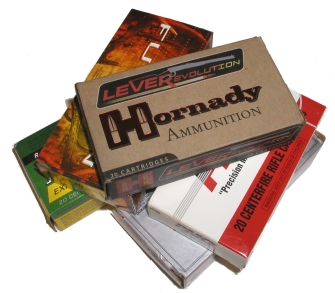 Hornady does a lot for gun owners by introducing new, interesting and smartly engineered products. They push the envelope when it comes to Light and Heavy Magnum cartridge performance and they make excellent bullets and lots of supporting equipment and handloading manuals for handloaders. So when they announced the new Lever Evolution ammunition for classic cartridges, I wanted to take a closer look. The idea of a substantial increase in velocity and downrange performance for some of the more “relic” cartridges obviously has a great deal of potential. I guess, at some level, I also wanted to check for evidence of GAP marketing, a phrase I coined in honor of the 45 GAP where high performance lives mostly in the review writer’s mind, safely tucked away from the laws of physics and other realities.
Hornady does a lot for gun owners by introducing new, interesting and smartly engineered products. They push the envelope when it comes to Light and Heavy Magnum cartridge performance and they make excellent bullets and lots of supporting equipment and handloading manuals for handloaders. So when they announced the new Lever Evolution ammunition for classic cartridges, I wanted to take a closer look. The idea of a substantial increase in velocity and downrange performance for some of the more “relic” cartridges obviously has a great deal of potential. I guess, at some level, I also wanted to check for evidence of GAP marketing, a phrase I coined in honor of the 45 GAP where high performance lives mostly in the review writer’s mind, safely tucked away from the laws of physics and other realities.
The 30-30 Lever Evolution Concept
“Turn your ‘brush’ gun into a truly devastating long range performer!” is a hefty claim for Hornady to make, especially when applied to a utility gun like the 30-30 WCF. The term “brush gun” means different things to different people. Mostly the term reflects a firearm optimized for hunting in dense cover and close in irregular terrain where targets are fleeting – short barreled lever action rifles with open or modest telescopic sights are common. There are no brush bucking cartridges, as all bullets are deflected by brush contact. “Brush cartridges” is frequently nothing more than a term describing older cartridges with modest ballistics that are good enough for close up work, but not of sufficient performance for long range work. Sometimes these rounds are big bore and substitute large wound channels for: the high velocity, violent bullet expansion and hydrostatic shock of the ballistic hotdogs.
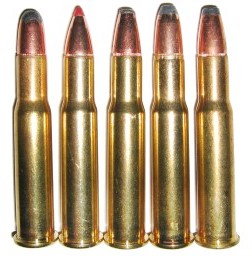 The Hornady Lever Evolution concept in a nutshell – Increase muzzle velocity and bullet ballistic coefficient for greater retained velocity and energy. Reduced time in flight as a function on increased velocity means flatter trajectory. Hornady was attempting to breath new life into some of the old timers and give them extended range capability. It’s easy to pick out the Hornady in the 30-30 WCF cartridge line up, the Hornady bullet has a distinctive appearance. Left to right: Remington Express 170 grain, Hornady Lever Evolution 160 grain, Federal Fusion 150 grain, Winchester Power Point 150 grain, PMC 150 grain. Unlike its peers, it has a spire tip while still safe for use in a tubular magazine. The key to this arrangement is an extremely pliable and shock absorbing tip that recovers it’s original shape after being distorted by incidental contact and will not detonate a forward primer in a tubular magazine. The 30-30 WCF load generates approx 11 lbs of recoil. The tip begins to compress under less than 1 lbs of pressure and keeps right com compressing. Most shock is already absorbed in a tubular magazine by a long magazine spring. Between the soft tip and magazine spring, there it no chance of accidental discharge despite the pointed bullet.
The Hornady Lever Evolution concept in a nutshell – Increase muzzle velocity and bullet ballistic coefficient for greater retained velocity and energy. Reduced time in flight as a function on increased velocity means flatter trajectory. Hornady was attempting to breath new life into some of the old timers and give them extended range capability. It’s easy to pick out the Hornady in the 30-30 WCF cartridge line up, the Hornady bullet has a distinctive appearance. Left to right: Remington Express 170 grain, Hornady Lever Evolution 160 grain, Federal Fusion 150 grain, Winchester Power Point 150 grain, PMC 150 grain. Unlike its peers, it has a spire tip while still safe for use in a tubular magazine. The key to this arrangement is an extremely pliable and shock absorbing tip that recovers it’s original shape after being distorted by incidental contact and will not detonate a forward primer in a tubular magazine. The 30-30 WCF load generates approx 11 lbs of recoil. The tip begins to compress under less than 1 lbs of pressure and keeps right com compressing. Most shock is already absorbed in a tubular magazine by a long magazine spring. Between the soft tip and magazine spring, there it no chance of accidental discharge despite the pointed bullet.
Increased velocity
The advertised velocity, and velocity marked on the cartridge box for the 30-30 Lever Evolution ammo is 2400 fps which is noted as “Up to 250 fps more muzzle velocity at safe pressures…”. The Hornady comparison charts establish a relationship between the Hornady 160 grain ammo and 170 grain rounds from competitors in conjunction with a 24″ barrel. Well, the Hornady round is 10 grains lighter than its competitors so it would reasonably be faster, and I do not believe I have seen too many 24″ barrel 30-30 rifles in the woods. A little GAP marketing perhaps; apple to orange comparison of bullet weights favoring the promoted product and with a gun barrel length that would not be typical of a 30-30 WCF firearm. Perhaps if Hornady sandwiched its round between competing high performance 150 and 170 grain rounds and pumped them through a average saddle carbine the data would look a little more credible, but I think that would violate the natural laws of marketing. There were no comparison to other 160 grain commercial loads as there are none; 150 grain and 170 grain are the primary hunting weights for the almost always flat nose 30-30 WCF round. I found myself with lots of questions, no obvious answers, so I packed up the gear and headed for the range to clock some of the ammo myself. The test rifle was a standard 20″ barrel Winchester Model 94 of recent manufacture. The Chronographs were a Shooting Chrony and an Oehler Model 43 for verification. Range temperature was 61°F with 38% relative humidity.
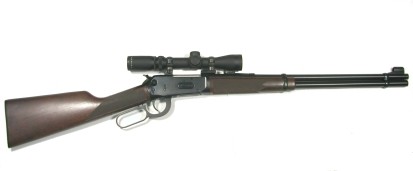 |
|||||
| Ammo | Bullet Weight Grains |
Actual MV FPS |
Advertised MV – FPS |
MV Variance Actual to advertised |
MV Variance to Hornady Lever Evolution |
| Remington Express |
170 | 2012 | 2200 | -188 | -275 |
| Hornady Lever Evolution |
160 | 2287 | 2400 | -113 | na |
| Federal Fusion |
150 | 2313 | 2390 | -77 | +26 |
| PMC Bronze |
150 | 2211 | 2300 | -89 | -76 |
| Winchester Power Point |
150 | 2234 | 2390 | -156 | -53 |
Is the Lever Evolution ammo as much as 250 fps faster than competitors? The answer is a qualified “yes” accepting that this comparison is to a competitor’s 10 grain heavier bullet standard load. In comparison to bullets 10 grains lighter, the Hornady bullet edge shrinks to more nominal differences and, at least in one case, it is slower than a competitor’s ammo. Would this be different if the barrel length selected for testing was not typical of 30-30 WCF cartridge guns and in possession of a 24″ barrel? Honestly, I don’t know. I have collected an extensive amount of velocity data on the 30-30 WCF in 20″ carbines and 10″ through 14″ single shot handguns which indicates velocity increase, per inch of barrel increase, are minimal above 14″ for this cartridge with common powder types and charges. That said, on disassembly of a Hornady cartridge I found it to contain 35 grains of a ball type powder which suggests a powder type slower than Winchester 748. A powder of this type might require a longer barrel for optimal performance through more complete burn, but I think this is a mute point as most 30-30 WCF rifles carry barrels in the 16″-20′ range and would never see this advantage.
30-30 WCF owners wanting to attempt 2400 fps out of the new Hornady ammo could of course go out and buy a 24″ barrel Winchester or one of the newly released Marlin XLR 24″ barrel lever guns that have been optimized for the Hornady Lever Evolution ammo, however, this would require the expense of a new gun and the loss of quick handling “brush gun” barrel – all for some pretty unimpressive, even if optimized cartridge performance. Wouldn’t it be easier to just buy a $350 30-06 Springfield or 270 Winchester for those times when longer range hunting is anticipated? My conclusion is that the Hornady Lever Evolution ammo, in most 30-30 WCF guns, offers no major gain in muzzle velocity over other premium commercial ammo.
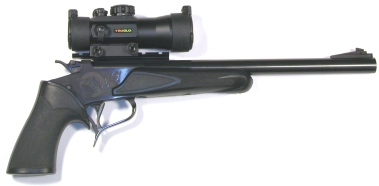 |
|||||
| Ammo | Bullet Weight Grains |
Actual MV FPS 20″ Barrel |
Actual MV FPS 14″ Barrel |
FPS Change 20″ to 14″ |
FPS Loss Per 1″ of Reduction |
| Remington Express |
170 | 2012 | 1947 | 65 | 11 |
| Hornady Lever Evolution |
160 | 2287 | 2167 | 120 | 20 |
| Federal Fusion |
150 | 2313 | 2202 | 111 | 18 |
| PMC Bronze |
150 | 2211 | 2156 | 55 | 9 |
| Winchester Power Point |
150 | 2234 | 2134 | 100 | 17 |
I also ran tests with a short barrel gun, a 14″ Contender. While, typically, the loss of velocity with shrinking barrel length is more exaggerated, there was not that much of a difference in recorded velocity with a 6″ of barrel reduction from the carbine. If velocity was not going to be a breakaway feature, I thought I would move on and look for flatter trajectory and greater retention of velocity and energy as a byproduct of an improved bullet BC.
Comparative trajectory and retained velocity and energy
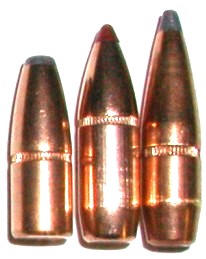
I did not find a published ballistic coefficient for the 160 grain Evolution bullet, but I did hit the reverse button on my calculator, using the Hornady published velocity tables, and ended up with a .329 BC. The 150 grain Speer FN Hot Core slug for the 30-30 WCF (left) has a .268 BC and the Hornady 165 grain Boat Tail Spire Point (right) has a .435 BC. It seems reasonable that the Evolution would fall between those two extremes.
The Lever Evolution bullet appears very similar to the Hornady Secant Ogive bullets where the shank and body are full and the tip has a relatively fast taper, concluding in a sharp tip. Hornady’s 150 grain full metal jacket of this design is assigned a .398 BC, so it isn’t a stretch that the longer shank of the Lever Evolution bullet would fall into the .329 BC range. At first I thought the 160 grain weight was achieved by utilizing an existing 165 grain bullet and substituting the lead tip with a less dense polymer tip. However, with closer examination, the need to seat the bullet deeply to meet the 30-30 WCF COL length spec required a longer shank. The longer the shank, the shorter and sharper the ogive, the less favorable the bullet’s ballistic coefficient.
Manufacturer’s published data, as noted below, makes a direct comparison difficult, particularly in the area of trajectory, as each manufacturer selected a different and not necessarily optimized zero, and each data set was predicated on a muzzle velocity not demonstrated in actual fire. The first table, as previously noted, reflects each manufacturer’s data, the second table is based on recorded range data and with an optimized zero for the specific cartridge/bullet combination.
Advertised performance
|
Ammo |
Muzzle | 100 | 200 | 300 | |
| Remington Express .254 BC |
Velocity | 2200 | 1895 | 1619 | 1381 |
| Energy | 1827 | 1355 | 989 | 720 | |
| Trajectory | – | 1.8 | -4.6 | -24.5 | |
| Hornady Lever Evolution .329 BC* |
Velocity | 2400 | 2150 | 1916 | 1699 |
| Energy | 2046 | 1643 | 1304 | 1025 | |
| Trajectory | – | 3.0 | 0.2 | -12.1 | |
| Federal Fusion .272 BC |
Velocity | 2390 | 2090 | 1810 | 1560 |
| Energy | 1900 | 1455 | 1095 | 815 | |
| Trajectory | – | 3.2 | 0 | -14.1 | |
| PMC Bronze .221 BC |
Velocity | 2300 | 1943 | 1627 | 1352 |
| Energy | 1762 | 1257 | 881 | 608 | |
| Trajectory | – | 0 | -7.8 | -28.9 | |
| Winchester Power Point .218 BC |
Velocity | 2390 | 2018 | 1684 | 1398 |
| Energy | 1902 | 1356 | 944 | 651 | |
| Trajectory | – | 1.7 | -4.3 | -22.7 | |
|
*Calculated from manufacturer’s published data. Method within .001 BC when tested against other brand published BC data. The Lever Evolution round would require a 210 yard zero to reduce drop to 12.1″ at 300 yards. I believe that is called mortar fire. |
|||||
Performance based on range recorded data
|
Ammo |
Muzzle | 100 | 200 | 300 | |
| Remington Express .254 BC |
Velocity | 2012 | 1724 | 1470 | 1260 |
| Energy | 1485 | 1122 | 815 | 600 | |
| Trajectory | 1.5 | -0.2 | -10.7 | -37.4 | |
| Hornady Lever Evolution .329 BC* |
Velocity | 2287 | 2044 | 1817 | 1608 |
| Energy | 1840 | 1485 | 1173 | 918 | |
| Trajectory | 1.5 | 0.1 | -7.0 | -23.65 | |
| Federal Fusion .272 BC |
Velocity | 2313 | 2019 | 1749 | 1507 |
| Energy | 1760 | 1358 | 1018 | 757 | |
| Trajectory | 1.5 | 0.1 | -7.3 | -25.0 | |
| PMC Bronze .221 BC |
Velocity | 2211 | 1862 | 1552 | 1297 |
| Energy | 1605 | 1155 | 803 | 560 | |
| Trajectory | 1.5 | 0.0 | -9.28 | -31.7 | |
| Winchester Power Point .217 BC |
Velocity | 2234 | 1877 | 1560 | 1299 |
| Energy | 1640 | 1173 | 810 | 562 | |
| Trajectory | 1.5 | 0.1 | -8.32 | -31.2 | |
|
Calculated from range data with optimal zero for each cartridge with a 1″ point blank target for an apple to apple comparison. |
|||||
The Hornady and Federal ammo are very similar in external ballistics. The Hornady round has a considerable advantage in retained energy. Both are substantially superior to the other leading products. The slight velocity boost in advantageous but the bullet design seems to be the key to the Lever Evolution’s performance. Does the Hornady cartridge deliver up to 40% more energy than traditional flat point loads? Somewhere between 17% and 39% at 300 yard ranges where the effects of improved BC are most noticeable, but even at 100 yards there is a 25% pick up over other brands.
Accuracy – Consistency
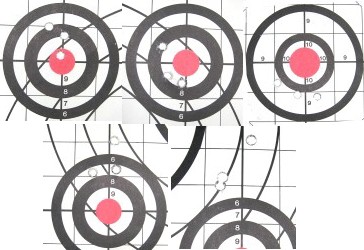
Left to right, top to bottom: Winchester 0.8″, PMC 1.1″, Remington 1.3″, Federal 1.1″, Hornady 1.5″. Both the Federal and Hornady which were higher on the velocity scale shifted point of impact and shot a bit high. I think all of this ammo provided exceptional out of the box accuracy. Hornady cited improved accuracy. I couldn’t get that result, but the Lever Evolution ammo is ball park accurate to other leading brands and perfectly acceptable for any reasonable 30-30 WCF application.
OK, Is it worth buying Lever Evolution Ammo ?
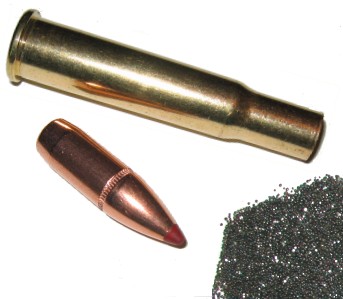
Personally I think the issue of velocity claims needs to be set aside. The Hornady ammo is faster than most, however the absolute velocity will vary with barrel length and specific gun. The big news is the higher BC bullet that combines with decent velocity for measurable and meaningful down range ballistic improvements. If I were selecting commercial ammo for a hunting trip I would definitely select the Hornady Lever Evolution ammo over other brands of 30-30 WCF ammo and enjoy that extra knock down power, particularly around the edges of the 30-30’s typical effective range. I would extend my typical shooting distance from 100 – 125 yards to 200 yards with this cartridge. I also believe this could be excellent factory single shot pistol ammo.
The price of Hornady ammo is not excessive. Hornady Lever Evolution $14.95, Remington Express $10.95, Winchester Power Point $14.95, Federal Fusion $12.95, PMC $9.95. Would I buy a 24″ barrel lever gun specifically for use with this ammo for long distance shooting? Not on your life and not even if I didn’t have a 30-30 WCF to begin with. I would just skip over the 30-30 WCF and go right to a 30-06 Springfield or 270 Winchester. The 30-30 WCF is a woods rifle, even in an improved form. What about handloading? I don’t think you could match the Hornady performance with handloads. The biggest stumbling block is access to the pliable tipped Evolution bullet, the second is access to the ball powder that is being used in these loads. Maybe it is an obvious powder type I am overlooking, but I could find no powder-bullet combination in ball powder that could drive a bullet of this weight at this velocity without excessive and unsafe pressure.
Thanks,
Joe

Email Notification